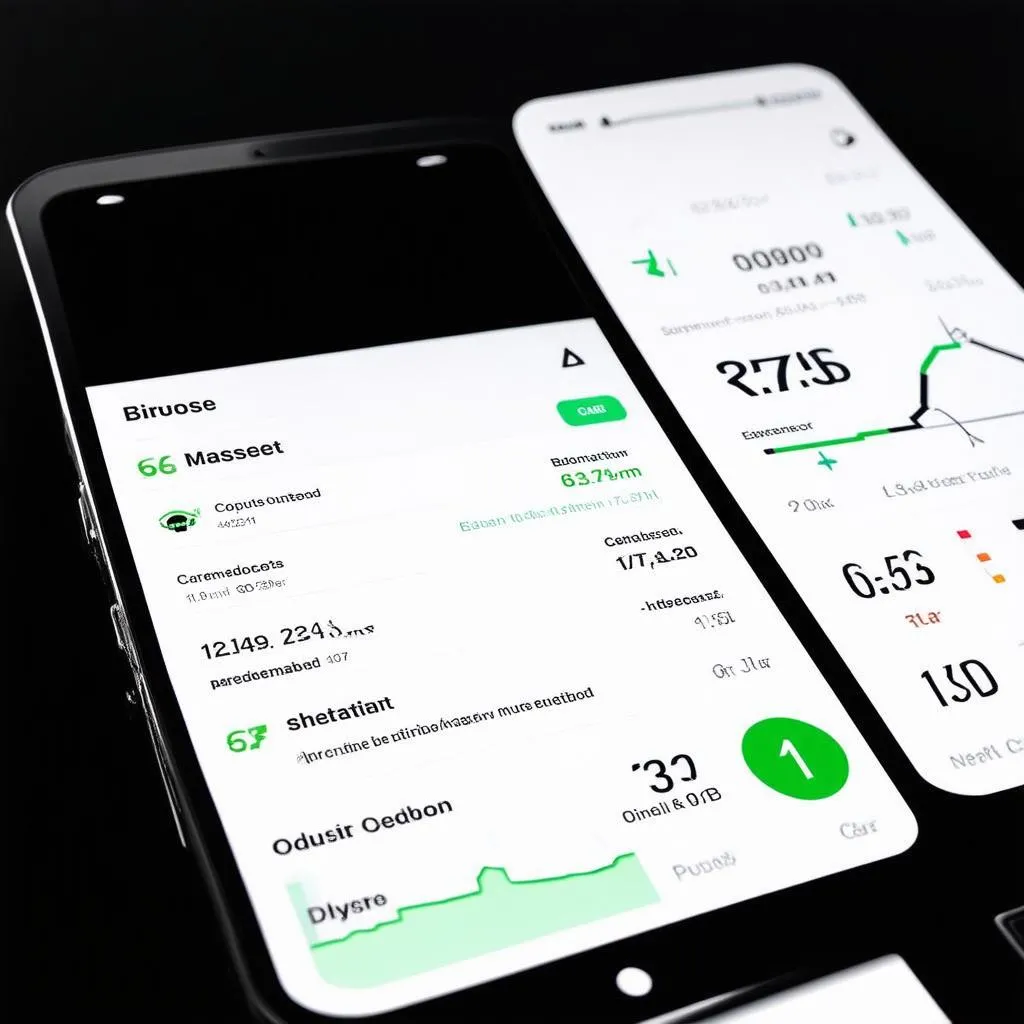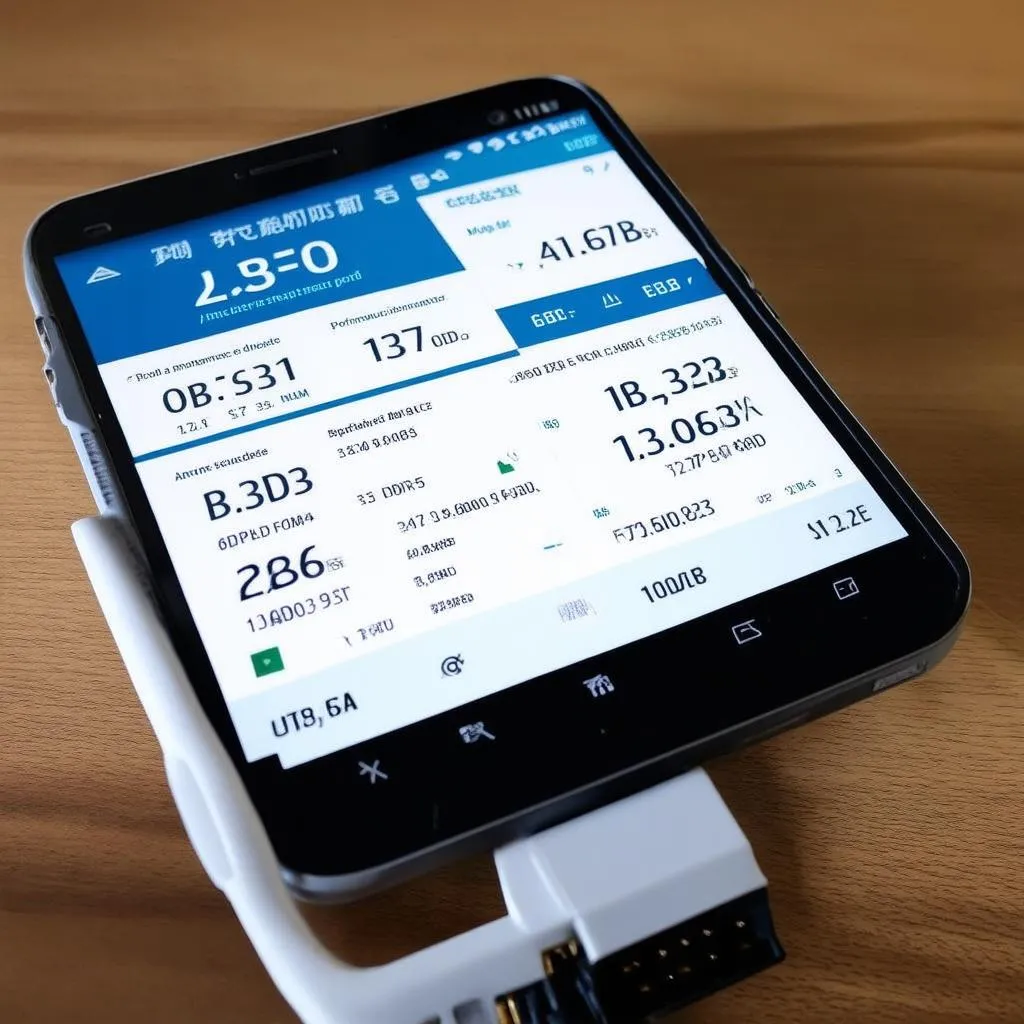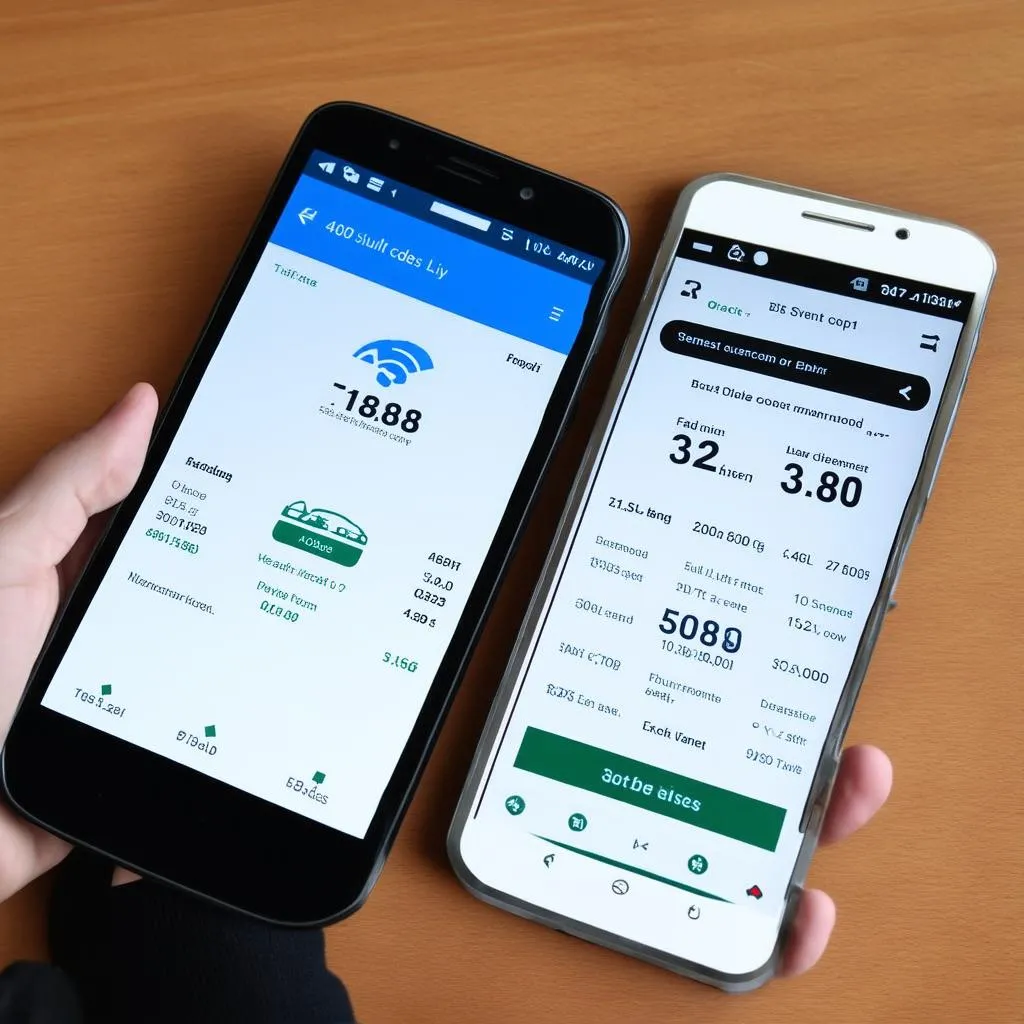“A car is a complex machine, with many intricate systems working together. Sometimes, even the most reliable car can throw a wrench in your plans with unexpected issues. But with the right tools, you can take control and understand your car like never before.”
What Are OBD Diagnostic Tools?
OBD (On-Board Diagnostics) diagnostic tools are your gateway to understanding your car’s health. These handy gadgets plug into your car’s OBD-II port, typically found under the dashboard, and allow you to read and interpret diagnostic codes.
Think of it like a car doctor’s stethoscope, but for your engine! These tools can reveal a wealth of information about your car’s performance, including:
- Engine health: Are there any warning signs your car is trying to tell you?
- Fuel efficiency: Optimize your driving and fuel consumption.
- Emissions monitoring: Keep your car running clean and green.
- Sensor readings: Gain insights into various sensors that monitor your car’s systems.
Why Choose Android Based OBD Diagnostic Tools?
The world of OBD diagnostic tools is vast, with options available for various platforms, including Android. Android-based tools offer several advantages:
- Portability: Access the power of diagnostics right from your phone, making it convenient for any situation.
- Affordability: Android OBD tools are often more budget-friendly than their PC counterparts.
- Apps Galore: Explore a wide range of OBD apps with diverse features, tailored to your needs.
- User-friendly interfaces: Navigate easily through intuitive apps and understand your car’s data.
Top Android Based OBD Diagnostic Tools
Now, let’s dive into the best Android-based OBD diagnostic tools available. We’ve considered user reviews, functionality, and price points to curate this list.
1. OBD Fusion
[ OBD Fusion App]
OBD Fusion App]
OBD Fusion stands out as a highly rated OBD app, offering a comprehensive suite of features and user-friendly interface. It’s known for its robust capabilities, including live data monitoring, fault code reading, and even custom dashboard customization.
Features:
- Live Data: Monitor real-time parameters like engine RPM, speed, fuel consumption, and more.
- Diagnostic Codes: Read and clear fault codes, helping you pinpoint potential issues.
- Custom Dashboards: Create personalized dashboards to display the data you care about most.
- Performance Data: Analyze driving performance and fuel efficiency metrics.
- Trip Logging: Track your trips and analyze driving habits.
Pros:
- Comprehensive features: Offers a wide range of functionality.
- Intuitive interface: Easy to navigate and understand.
- Customization: Create dashboards tailored to your needs.
Cons:
- Advanced features: Some features require a subscription.
2. Torque Pro
[ Torque Pro App]
Torque Pro App]
Torque Pro is another highly popular OBD diagnostic app. It’s known for its versatility and ability to adapt to different needs. It allows you to customize dashboards, track performance, and access a wealth of information about your car.
Features:
- Live Data: View real-time engine parameters, including speed, RPM, fuel consumption, and more.
- Diagnostic Codes: Read and clear fault codes, helping you diagnose issues.
- Custom Dashboards: Design personalized dashboards to display critical information.
- Performance Monitoring: Track acceleration, braking, and fuel efficiency.
- GPS Logging: Track your trips and analyze driving patterns.
Pros:
- Extensive customization: Customizable dashboards and widgets.
- Wide app support: Compatible with a variety of OBD adapters.
- Large user community: Access to resources and support.
Cons:
- Steep learning curve: The app can be complex for beginners.
3. Car Scanner ELM OBD2
[ Car Scanner ELM OBD2 App]
Car Scanner ELM OBD2 App]
Car Scanner ELM OBD2 is a user-friendly app designed to simplify your car’s diagnostics. It provides easy access to essential data and features, making it suitable for both beginners and experienced users.
Features:
- Live Data: Monitor real-time engine parameters, including speed, RPM, fuel consumption, and more.
- Diagnostic Codes: Read and clear fault codes to identify potential issues.
- Sensor Readings: View data from various sensors, including engine temperature, fuel pressure, and throttle position.
- Performance Graphs: Analyze trends in engine performance, fuel consumption, and other parameters.
Pros:
- Simple and intuitive: Easy to use for beginners.
- Clear and concise information: Presents data in an easy-to-understand format.
- Free version available: Offers basic functionality for free.
Cons:
- Limited features: The free version lacks some advanced features.
Choosing the Right Android Based OBD Diagnostic Tool
Selecting the best Android-based OBD diagnostic tool depends on your specific needs and preferences. Consider these factors:
- Features: Do you need live data monitoring, diagnostic code reading, performance analysis, or custom dashboards?
- User-friendliness: How easy is the app to navigate and understand?
- Price: Are you comfortable with a free app or willing to invest in a paid version with advanced features?
- Compatibility: Ensure the app is compatible with your car and OBD adapter.
Note: While we have highlighted some popular options, the automotive diagnostic landscape is ever-evolving. Research and explore other apps to discover what best suits your needs.
Frequently Asked Questions
Q: Can I use these apps on any car?
A: Most Android-based OBD diagnostic tools support cars equipped with the OBD-II port. This standard has been implemented in most gasoline-powered cars in the United States and many other countries since 1996. However, you may need to check the app’s compatibility with your specific car make and model.
Q: What kind of OBD adapter do I need?
A: You’ll need a compatible OBD-II adapter to connect to your car’s OBD port. Most Android-based OBD diagnostic apps support ELM327 adapters, which are widely available and affordable.
[link:https://techcarusa.com/eflm327-bluetooth-obd-adapter-how-to-use-with-linux-kayak/|Learn more about ELM327 adapters.]
Q: How do I use these apps?
A: Once you have a compatible OBD adapter, simply plug it into your car’s OBD-II port, pair it with your Android device, and open the OBD diagnostic app. The app will usually guide you through the setup process.
Q: Are there any risks to using these apps?
A: Generally, using Android-based OBD diagnostic tools is safe. However, it’s always good practice to choose reputable apps from trusted sources and avoid apps with suspicious permissions or reviews.
Q: What can I do with the data I get from these apps?
A: The data you collect from your OBD diagnostic tool can be used for various purposes, such as:
- Troubleshooting engine problems: Identify and diagnose engine faults.
- Monitoring fuel efficiency: Analyze driving habits and optimize fuel consumption.
- Tracking car performance: Monitor engine performance, acceleration, and braking.
- Understanding your car’s health: Get a better understanding of your car’s overall condition.
Unlock the Potential of Your Car
With Android-based OBD diagnostic tools, you can unlock a wealth of information about your car’s performance and health. Armed with this knowledge, you can make informed decisions about your car’s maintenance, performance, and overall well-being.
Remember: These tools can be a valuable resource, but they should not be used to diagnose complex issues. If you encounter any serious problems, consult a qualified mechanic.
Want to learn more about OBD diagnostic tools?
- [link:https://techcarusa.com/2006-honda-civic-coupe-obd-conector/|Learn about the OBD connector on a Honda Civic.]
- [link:https://techcarusa.com/obd-fusion-0-60/|Explore OBD Fusion in more depth.]
- [link:https://techcarusa.com/obdeleven-vs-vcds-a-comprehensive-comparison/|Compare OBD diagnostic tools.]
Need help setting up your OBD diagnostic tool?
Contact us on Whatsapp at +84767531508 and our team of experts will be happy to assist you 24/7.
We’re here to help you unlock the potential of your car!